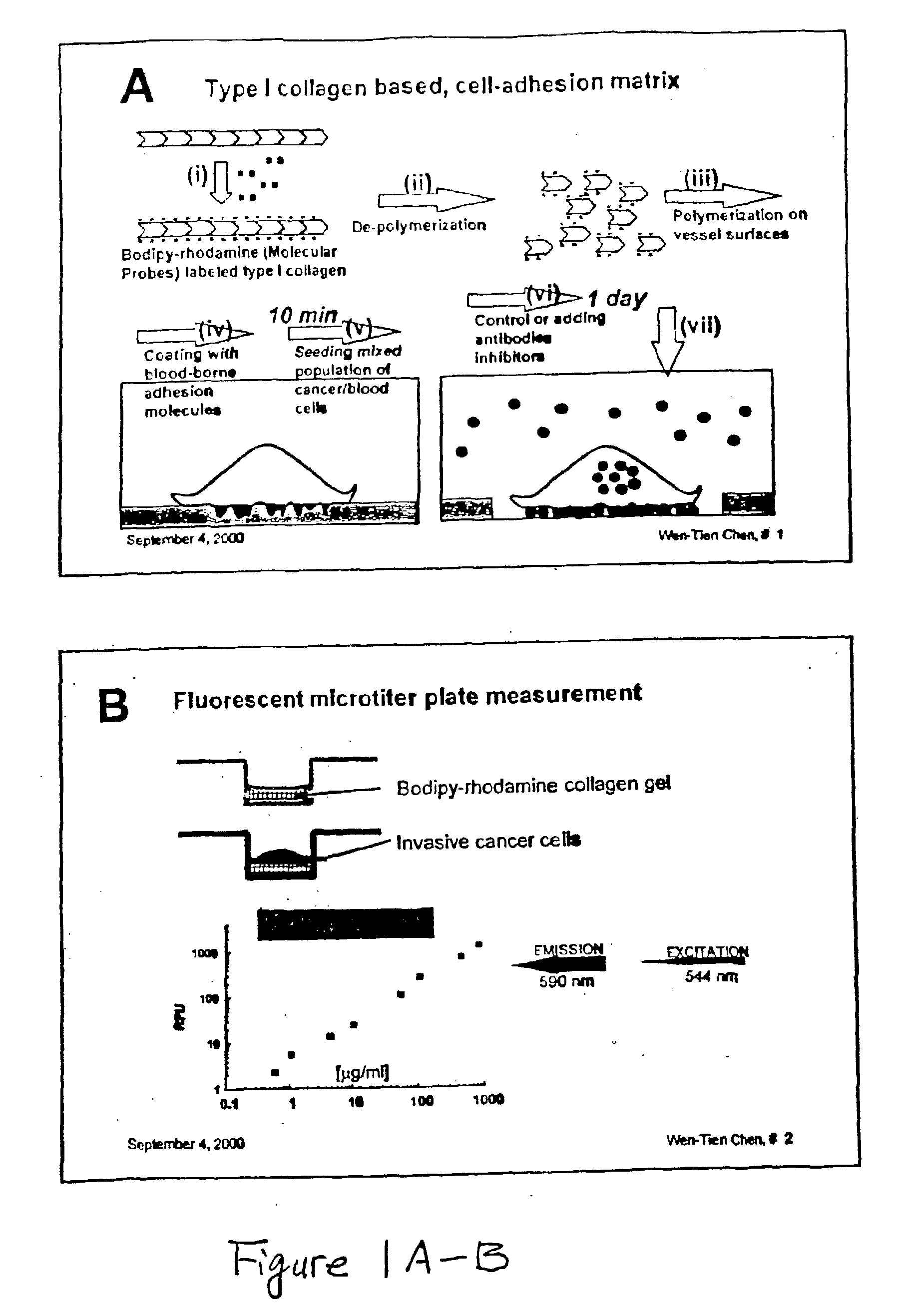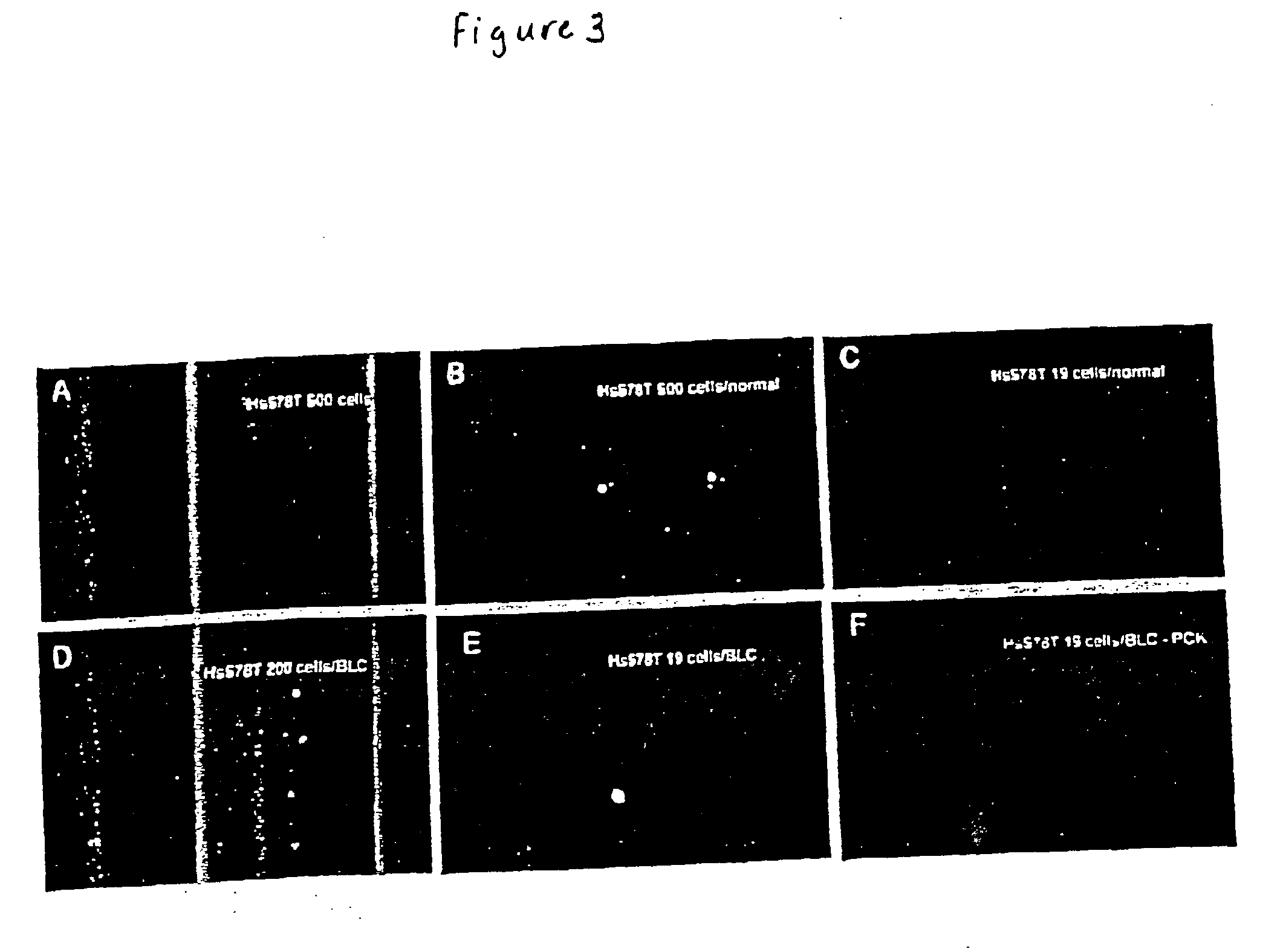Method and compositions for isolating metastatic cancer cells, and use in measuring metastatic potentatial of a cancer thereof
a metastatic cancer and cell technology, applied in the field of methods and compositions for isolating metastatic cancer cells, and using them in the measurement of metastatic potentatial of a cancer thereof, to achieve the effect of reducing leukocyte or complement association, rapid detection and isolation, and reducing the sensitivity and accuracy of measuring the metastatic potential of a cancer
- Summary
- Abstract
- Description
- Claims
- Application Information
AI Technical Summary
Benefits of technology
Problems solved by technology
Method used
Image
Examples
Embodiment Construction
[0043] The present invention relates to a novel method for forming a cell-adhesion matrix for isolation and detection of a subpopulation of cancer cells which are viable, invasive, and metastatic from a sample derived from a subject possessing a cancer. In particular, a method is described that utilizes a collagenous matrix system for isolation and detection of cancer cells. The invention described in the subsections below further relates to a novel highly sensitive in vitro assay for measuring the metastatic potential of a cancer. An important feature of the assay includes applicability to cancer cells in blood, bone marrow, ascites, body fluid, and tumor tissue, or any established cancer cell line.
[0044] The "cell-adhesion matrix" of the invention provides a cancer cell trap that allows for the high yield and efficient removal of viable cancer cells from whole blood, buffy coat, peripheral blood stem cell preparation or bone marrow. The cell separation method of the present invent...
PUM
| Property | Measurement | Unit |
|---|---|---|
| Adhesion strength | aaaaa | aaaaa |
| Fluorescence | aaaaa | aaaaa |
| Radioactivity | aaaaa | aaaaa |
Abstract
Description
Claims
Application Information
 Login to View More
Login to View More - R&D
- Intellectual Property
- Life Sciences
- Materials
- Tech Scout
- Unparalleled Data Quality
- Higher Quality Content
- 60% Fewer Hallucinations
Browse by: Latest US Patents, China's latest patents, Technical Efficacy Thesaurus, Application Domain, Technology Topic, Popular Technical Reports.
© 2025 PatSnap. All rights reserved.Legal|Privacy policy|Modern Slavery Act Transparency Statement|Sitemap|About US| Contact US: help@patsnap.com



